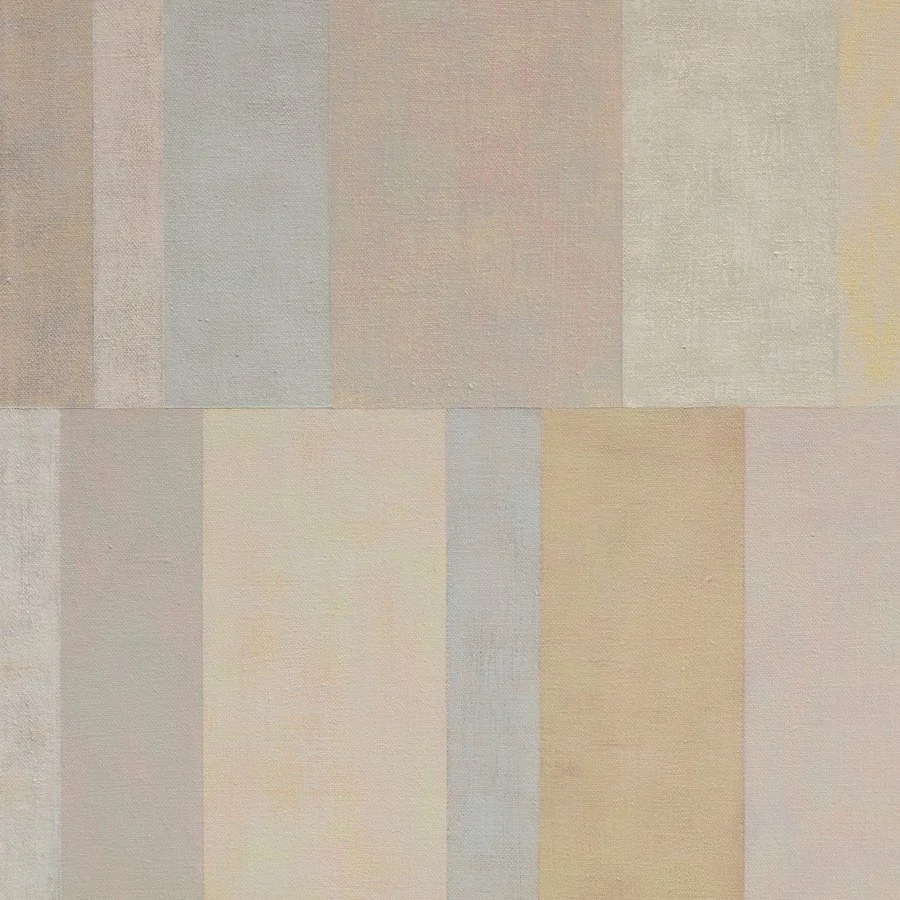Amanda Clyne, oil sketch on board, 8" x 10", 2013
““The only difference between an artist and a lunatic is, perhaps, that the artist has the restraint or courtesy to conceal the intensity of his obsession from all except those similarly afflicted.
”
I am not crazy. It is a mantra I repeat regularly to reassure myself.
I am not crazy. It is easier to believe some days more than others.
When I am not immersed in my own studio obsessions, I am obsessing about breaking free of my own singular voice. I imagine running away from all professional desires, responsibilities and expectations to adopt new eyes and hands, to paint every possible subject in every imaginable way.
One day I would run away to the French countryside and paint en plein air like Van Gogh or Monet.

Vincent Van Gogh

Claude Monet
The next day I'd lock myself in the studio to attempt painterly constructions like Sasha Pierce or Mark Grotjahn.

Sasha Pierce (detail)

Mark Grotjahn (detail)
Maybe I'd travel back to China to study the elegant simplicity of brush and ink, channeling my most ardent Brice Marden and Julie Mehretu.

Brice Marden

Julie Mehretu
Perhaps I'd catapult myself to Berlin to lose my mind in the chaotic ways of Jonathan Meese and Daniel Richter.

Jonathan Meese

Daniel Richter
After that, I might try to rehabilitate reason by immersing myself in the geometric journeys of Tomma Abts or Paul Klee.

Tomma Abts

Paul Klee
And that would just be the beginning. I want to paint it all. I want to try it ALL.
I don't want to copy these artists and their work, don't get me wrong. What I want is to adopt a thousand different mindsets, a million different sensibilities and see what it's like to experience the world in each manner of re-making. I want to see more and more of the world through an endless stream of wondrous and alien eyes. But I don't want to just look. I want to touch and make and think and process all these perspectives through the endless creation of endless kinds of art. I know it might sound crazy.
It is not that I have no vision of my own or no desire to hone it on my own terms. Of course I do. But I must confess to this other deep and insatiable curiosity. Expressing just one singular perspective seems woefully inadequate as a means of grappling with and reveling in the world around me. I am reminded of this quote by Marcel Proust:
"The only true voyage, the only bath in the Fountain of Youth, would be not to visit strange lands but to possess other eyes, to see the universe through the eyes of another, of a hundred others, to see the hundred universes that each of them sees, that each of them is..."
Indeed. How many lifetimes would I need to paint each one? Faced with the remains of this one short life, I have begun to feed this obsession quietly on my own. My regular studio practice continues, but patiently, privately, with work I will never show, I have begun to play -- play with new materials, new subjects, play for the pure joyous escape of temporarily abandoning my daily studio obsessions and finding the million other universes that lie within me. I'm sure these playful wanderings will feed my "work", but that is not their purpose. Their power lies in allowing me to roam, untethered to anything I have done before or anything I might do in the future. It reminds me to not get bogged down in the professional trappings of being an Artist, and to savor the solitary revelry of being an artist.



















